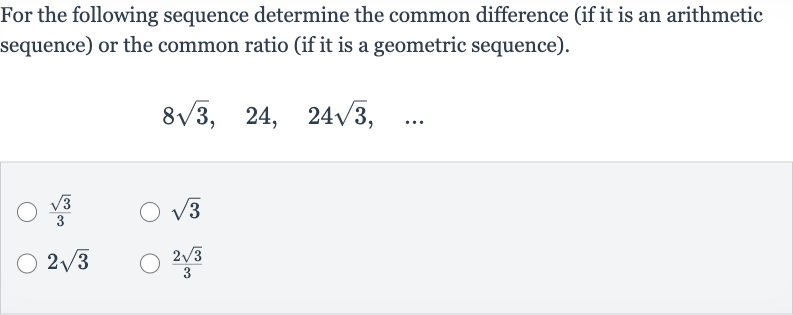Full solution
Q. For the following sequence determine the common difference (if it is an arithmetic sequence) or the common ratio (if it is a geometric sequence).
- Identify Sequence Type: First, let's identify whether the sequence is arithmetic or geometric. An arithmetic sequence has a common difference between terms, while a geometric sequence has a common ratio.To determine this, we can compare the ratio of consecutive terms.Let's calculate the ratio of the second term to the first term.Ratio =
- Calculate Ratio: Now, let's simplify the ratio.Ratio =
- Simplify Ratio: To further simplify, we can rationalize the denominator.Ratio =
- Check Consistency: After simplifying, we get:Ratio =
- Calculate Next Ratio: Now, let's check if this ratio is consistent with the next pair of terms.We calculate the ratio of the third term to the second term.Ratio =
- Simplify Next Ratio: Simplify the ratio.Ratio =
- Conclude Geometric Sequence: Since the ratio between consecutive terms is consistent and equal to , we can conclude that the sequence is geometric with a common ratio of .

